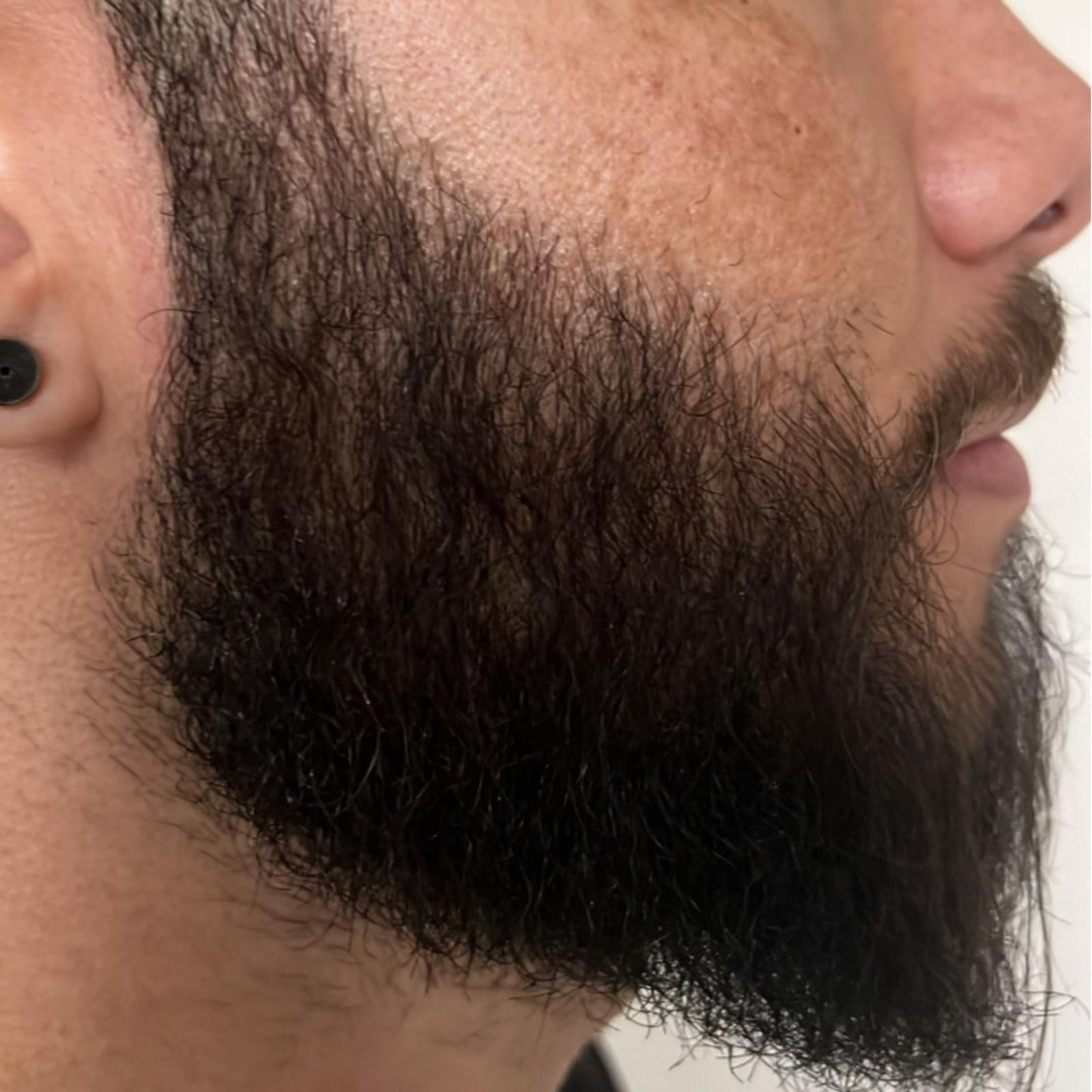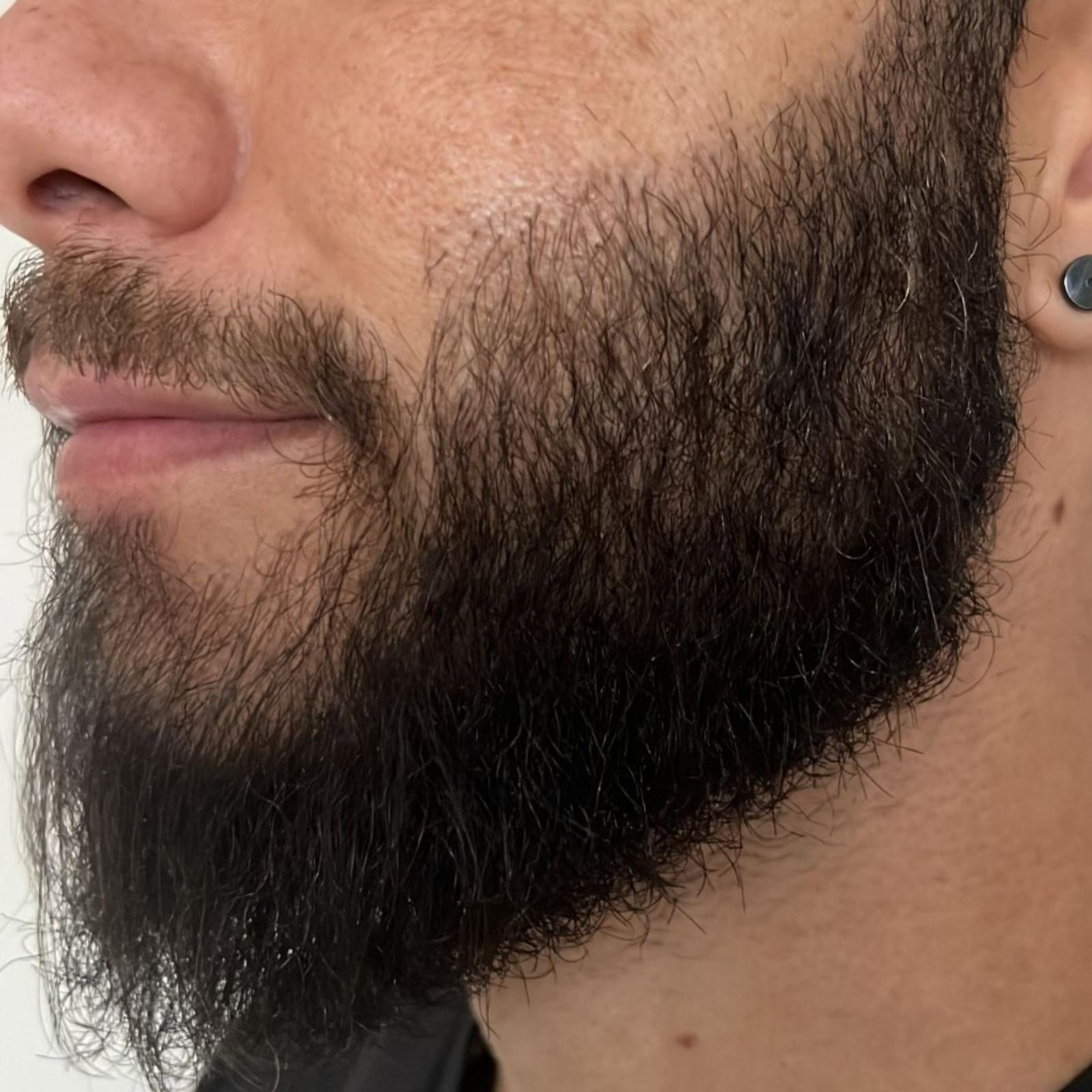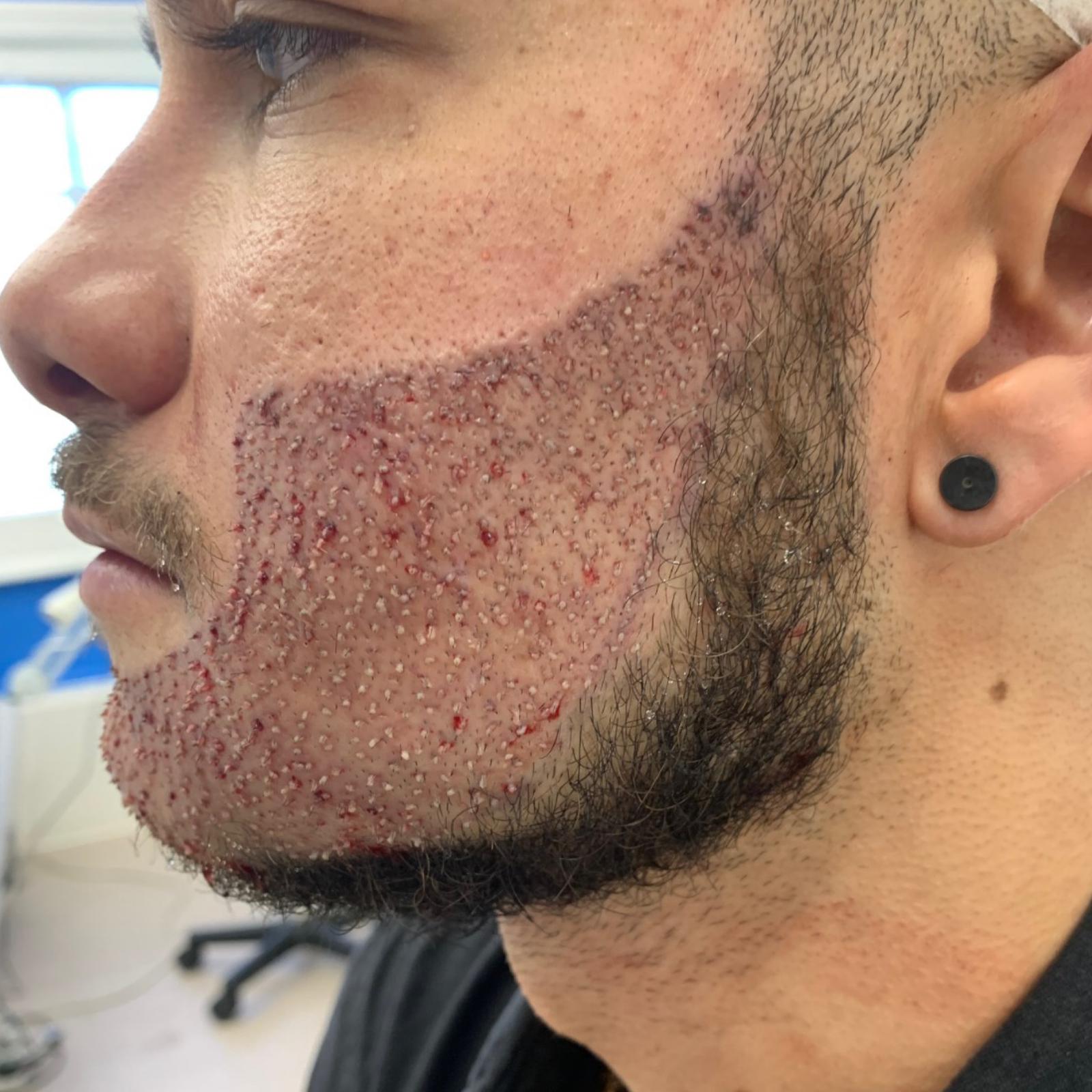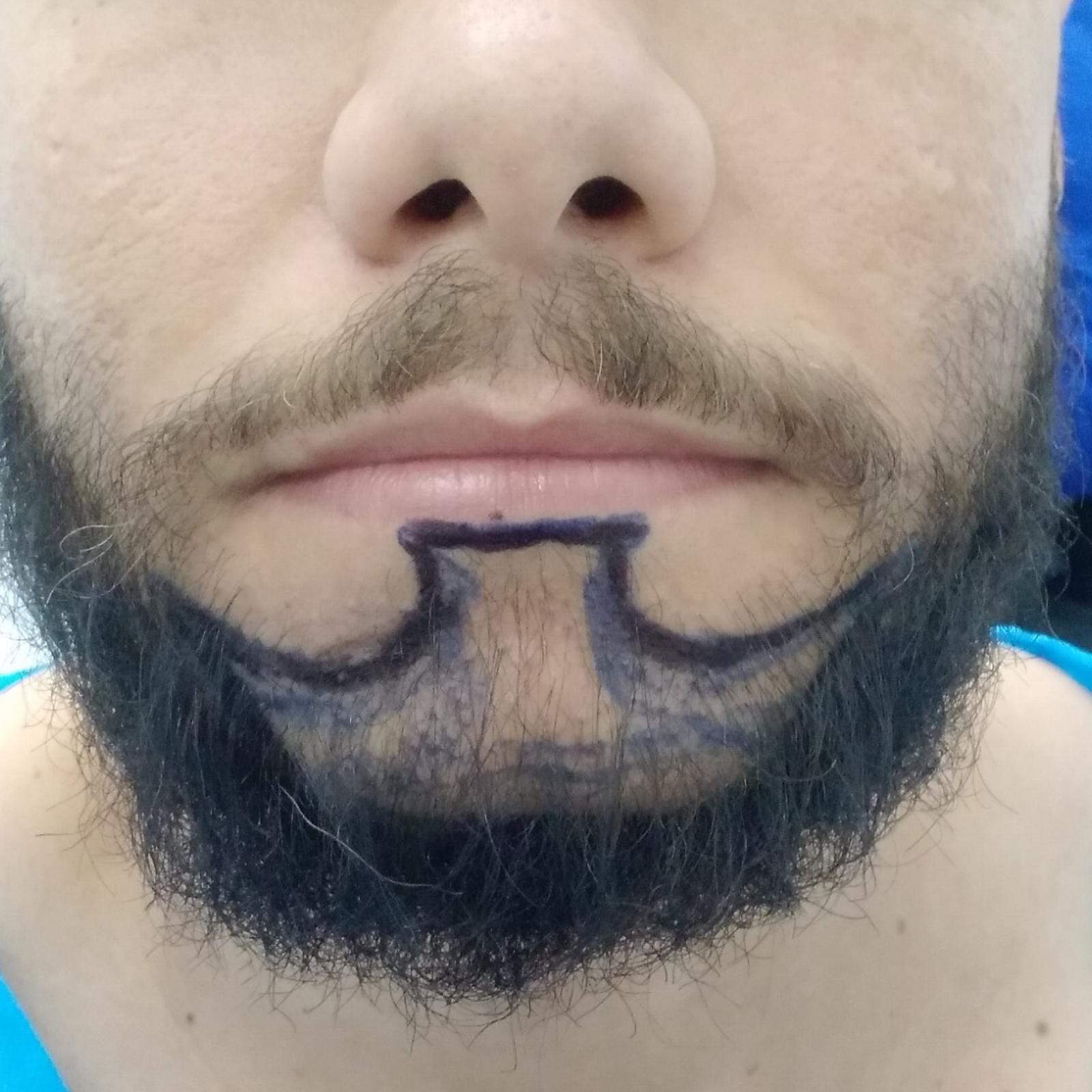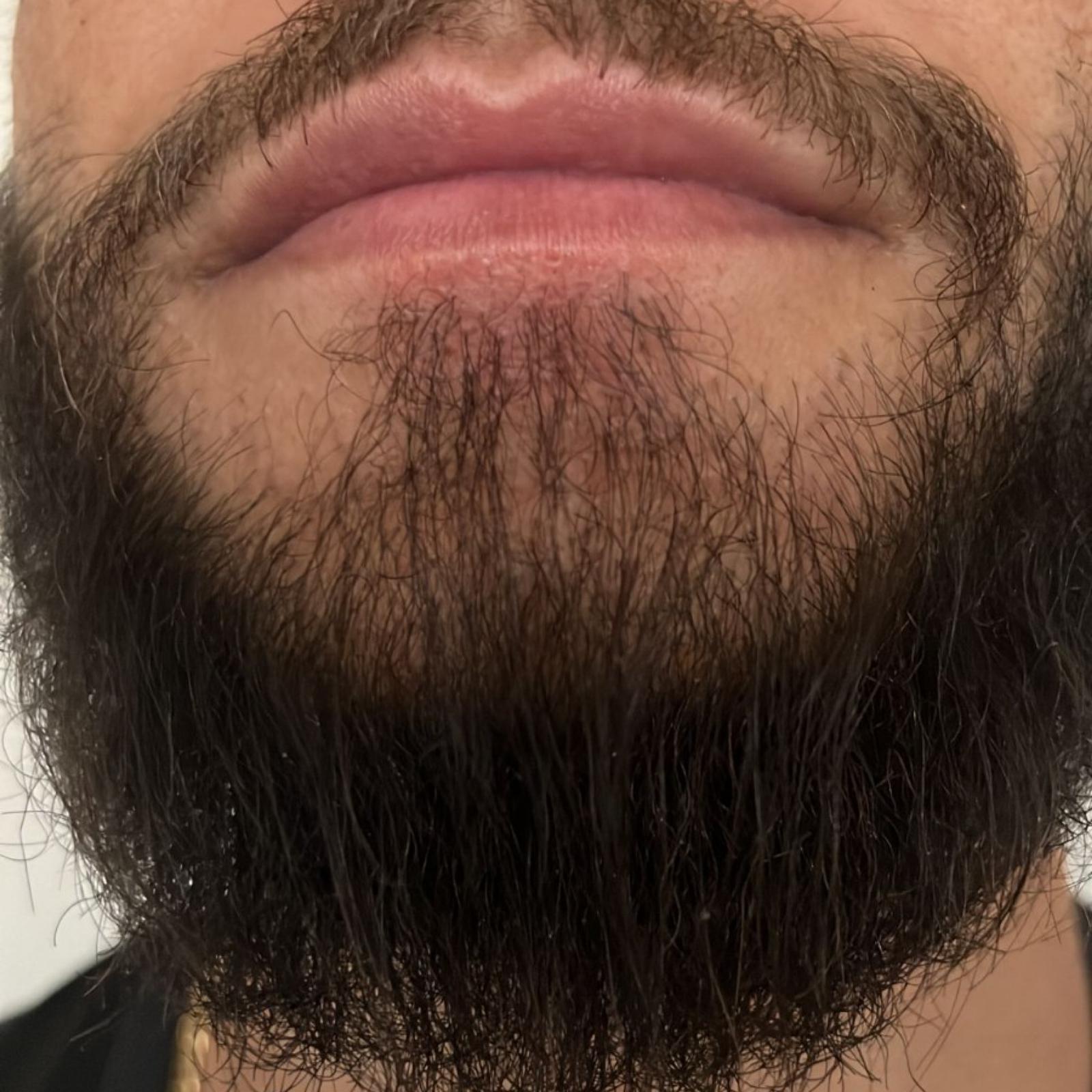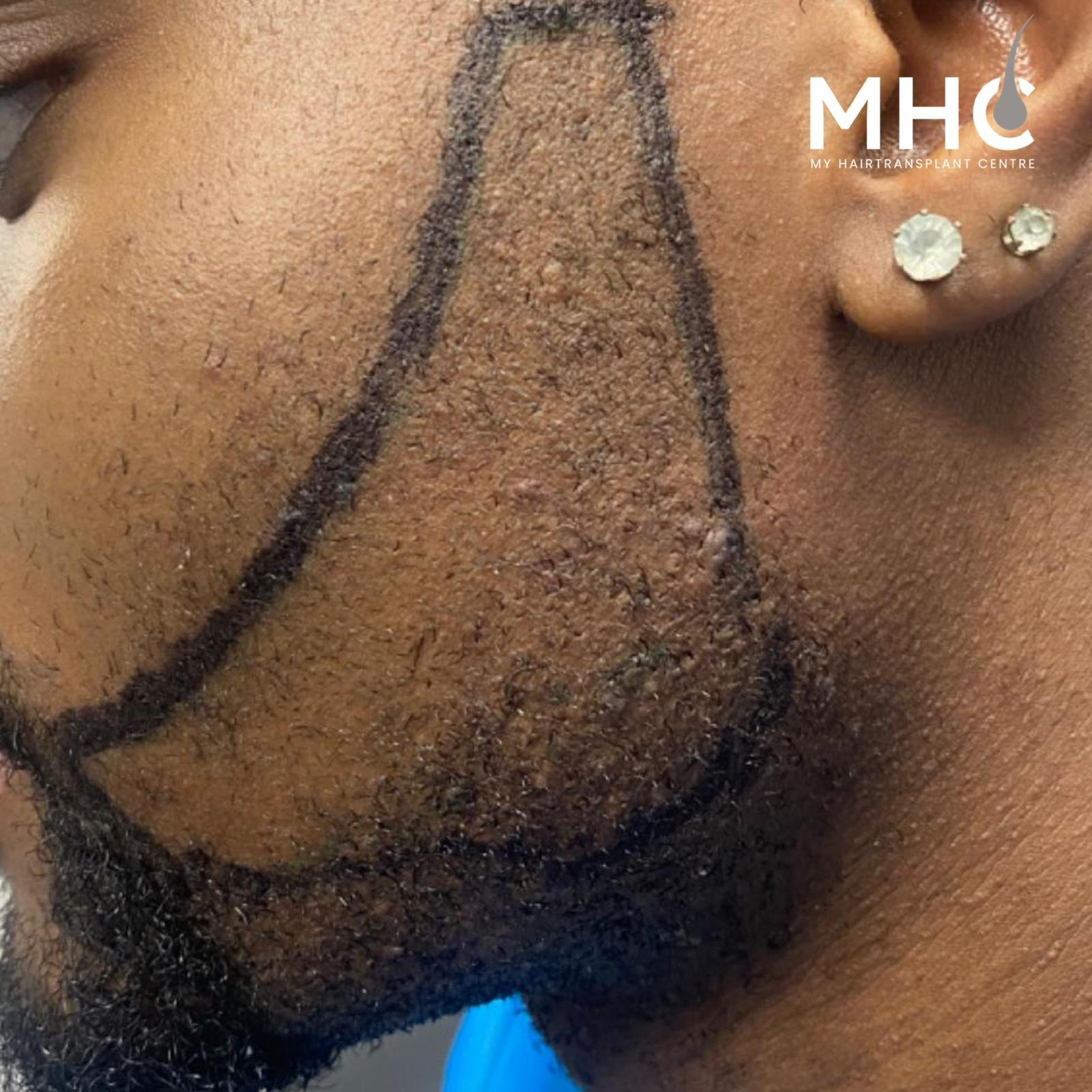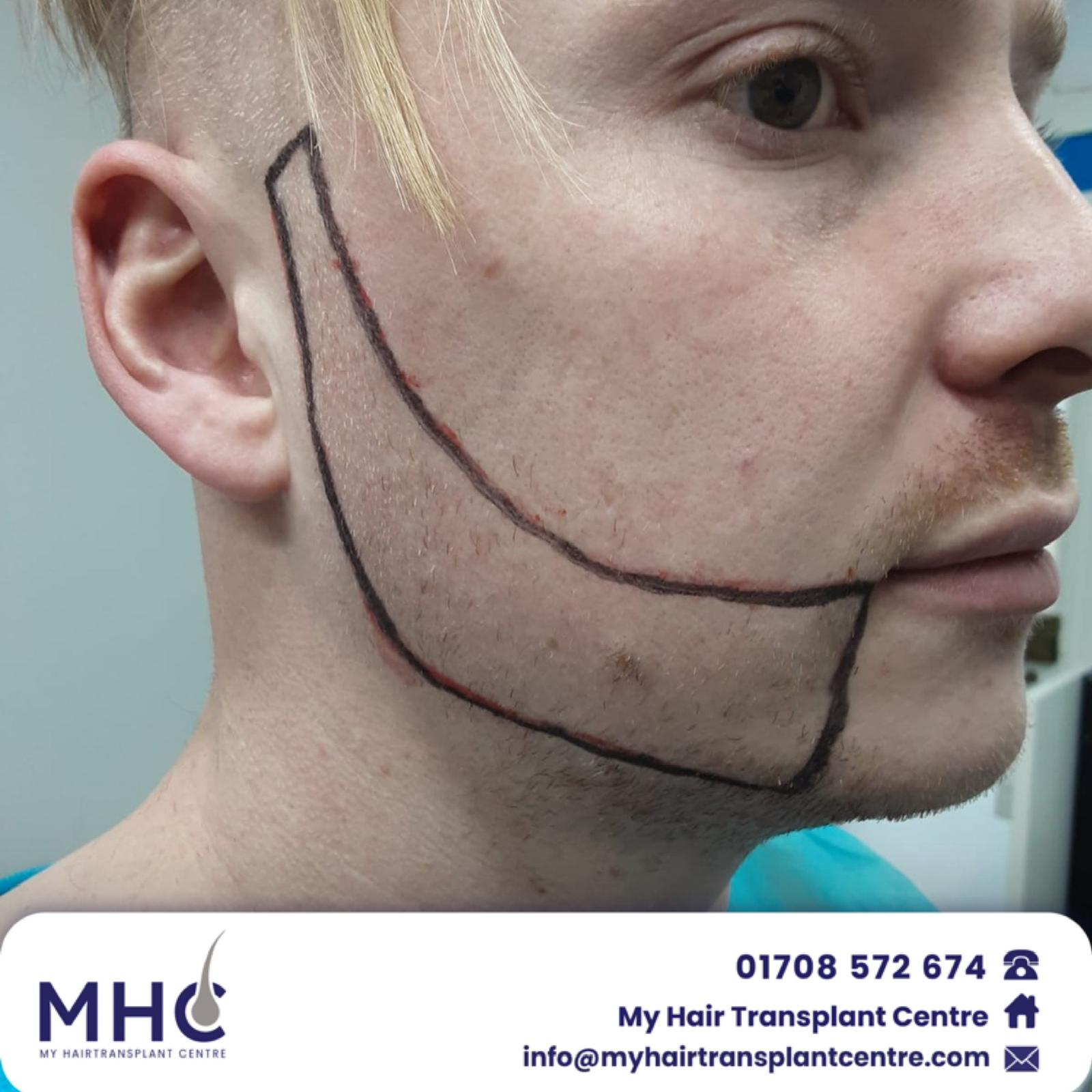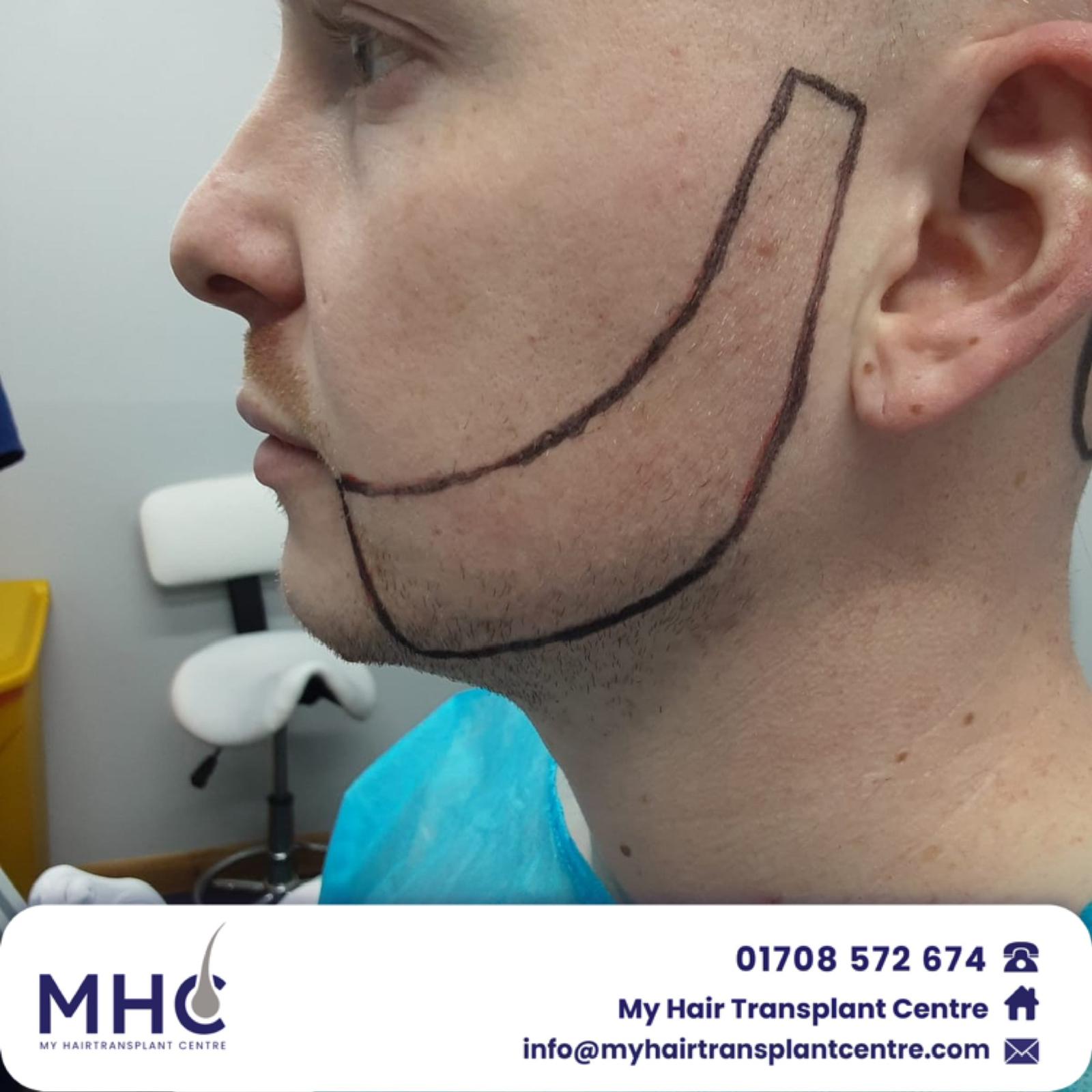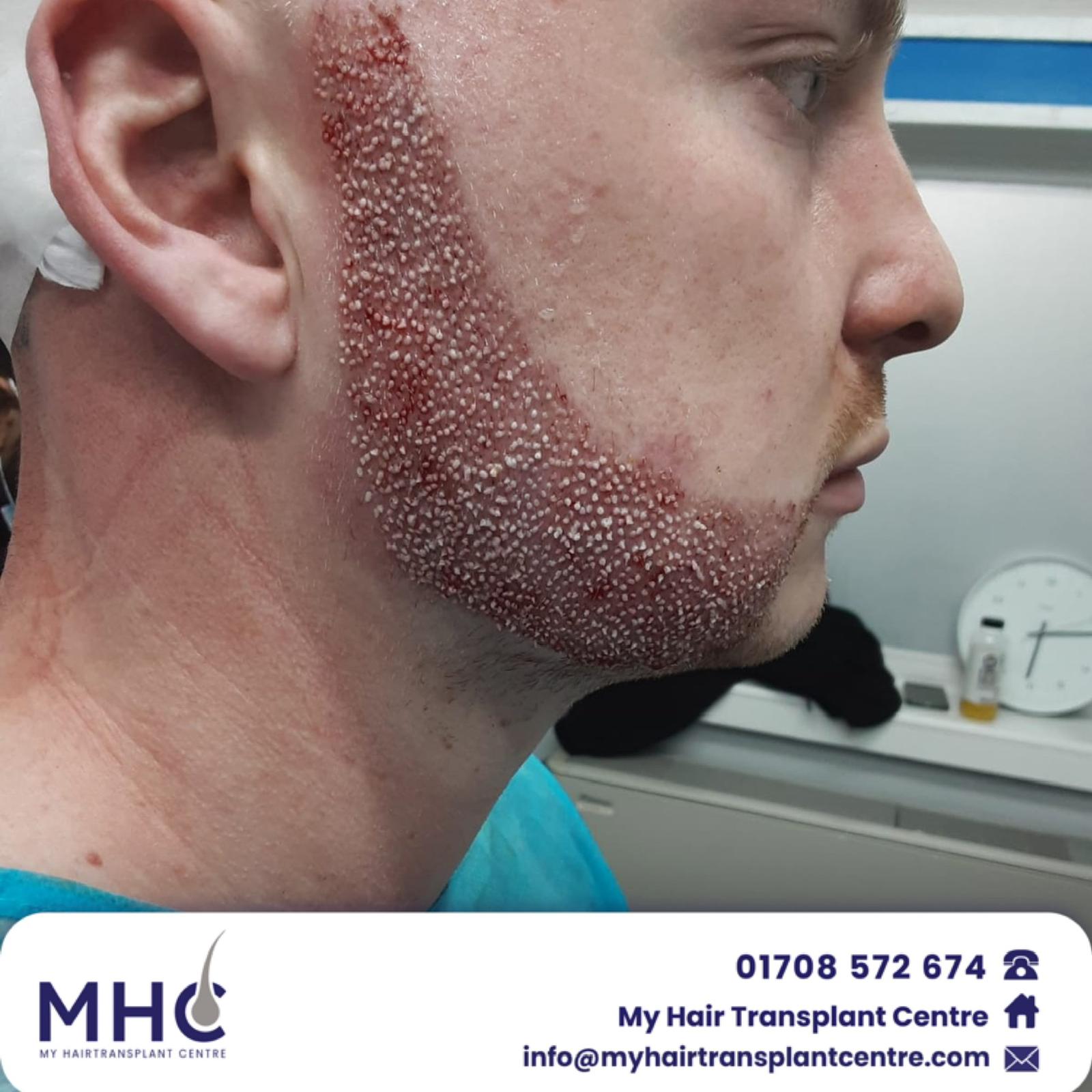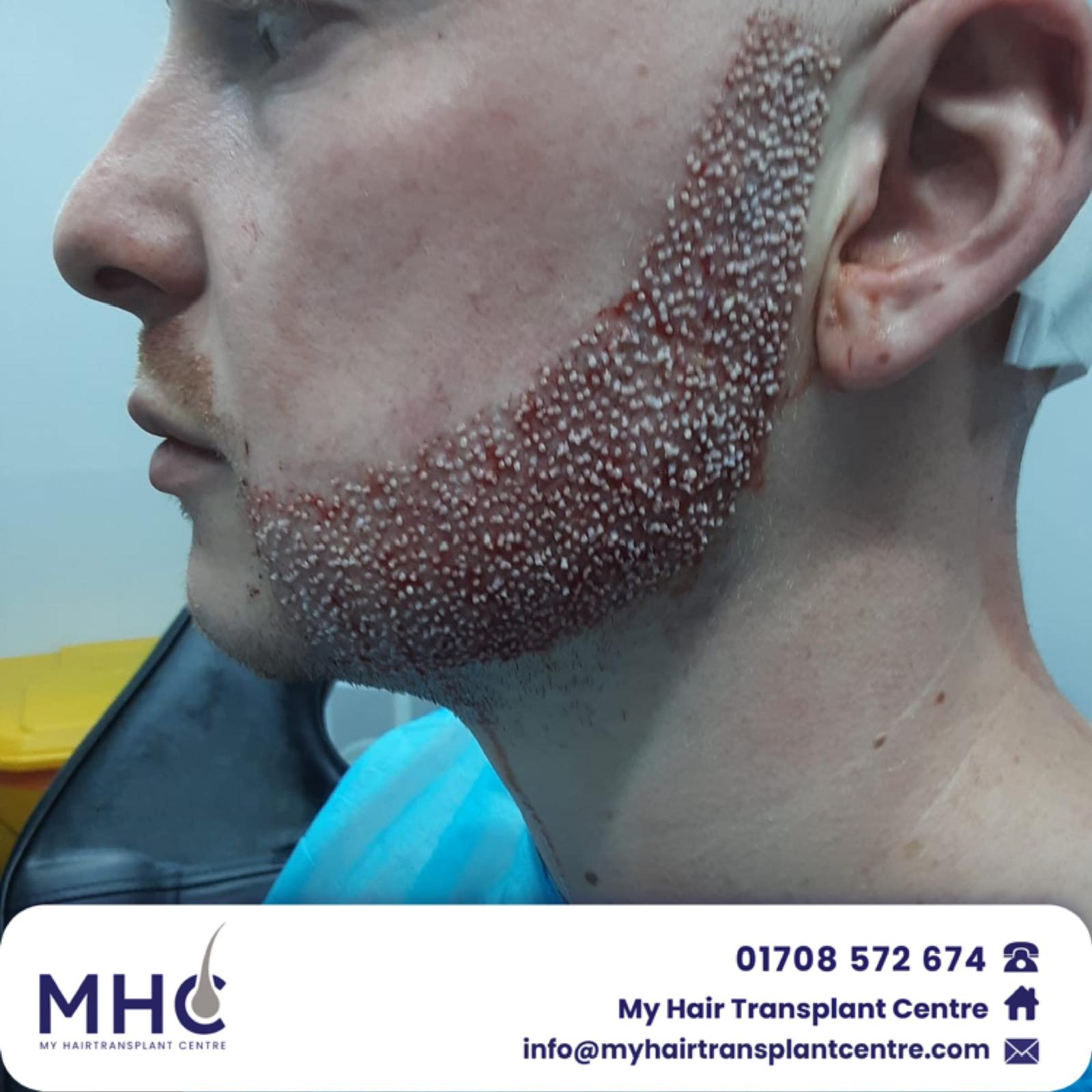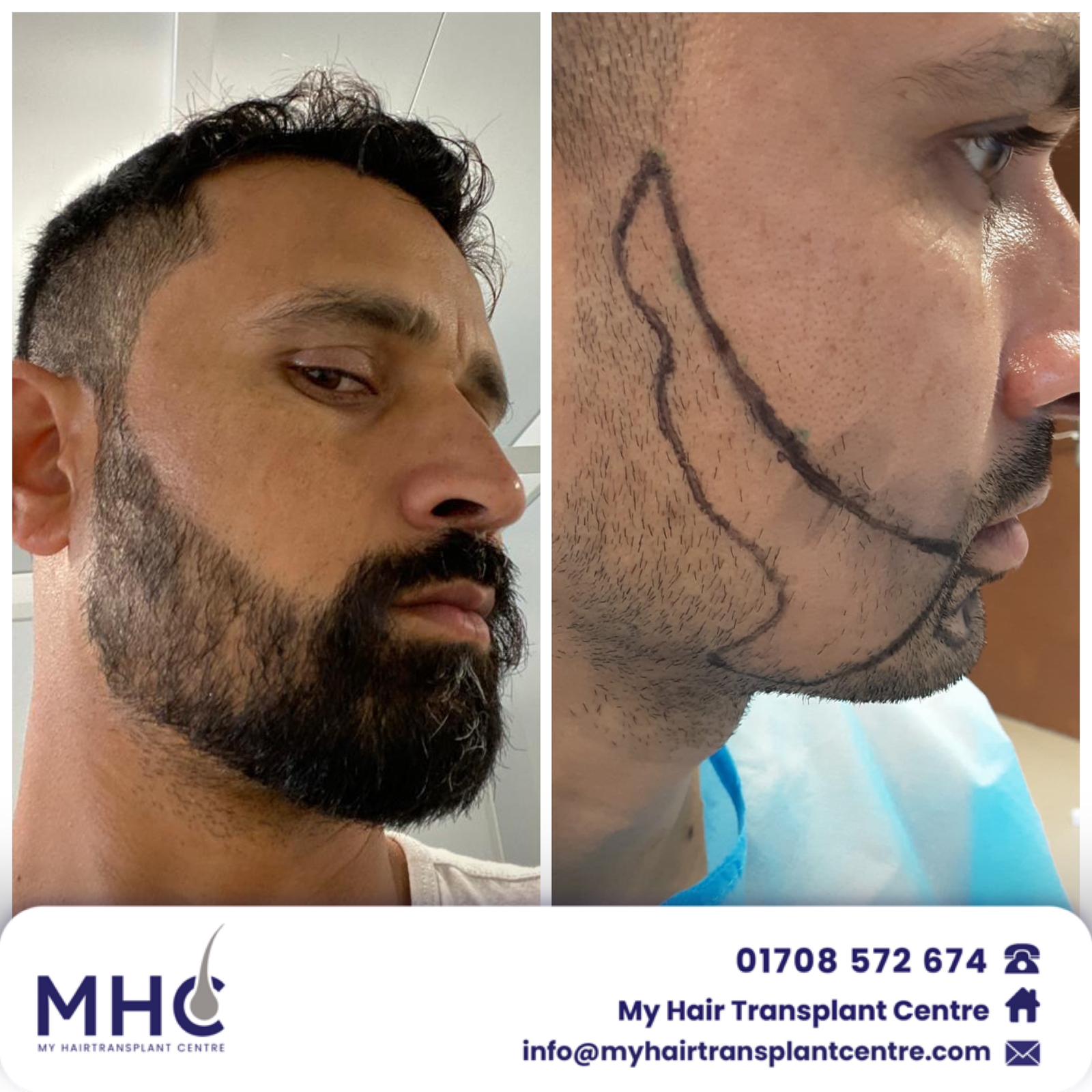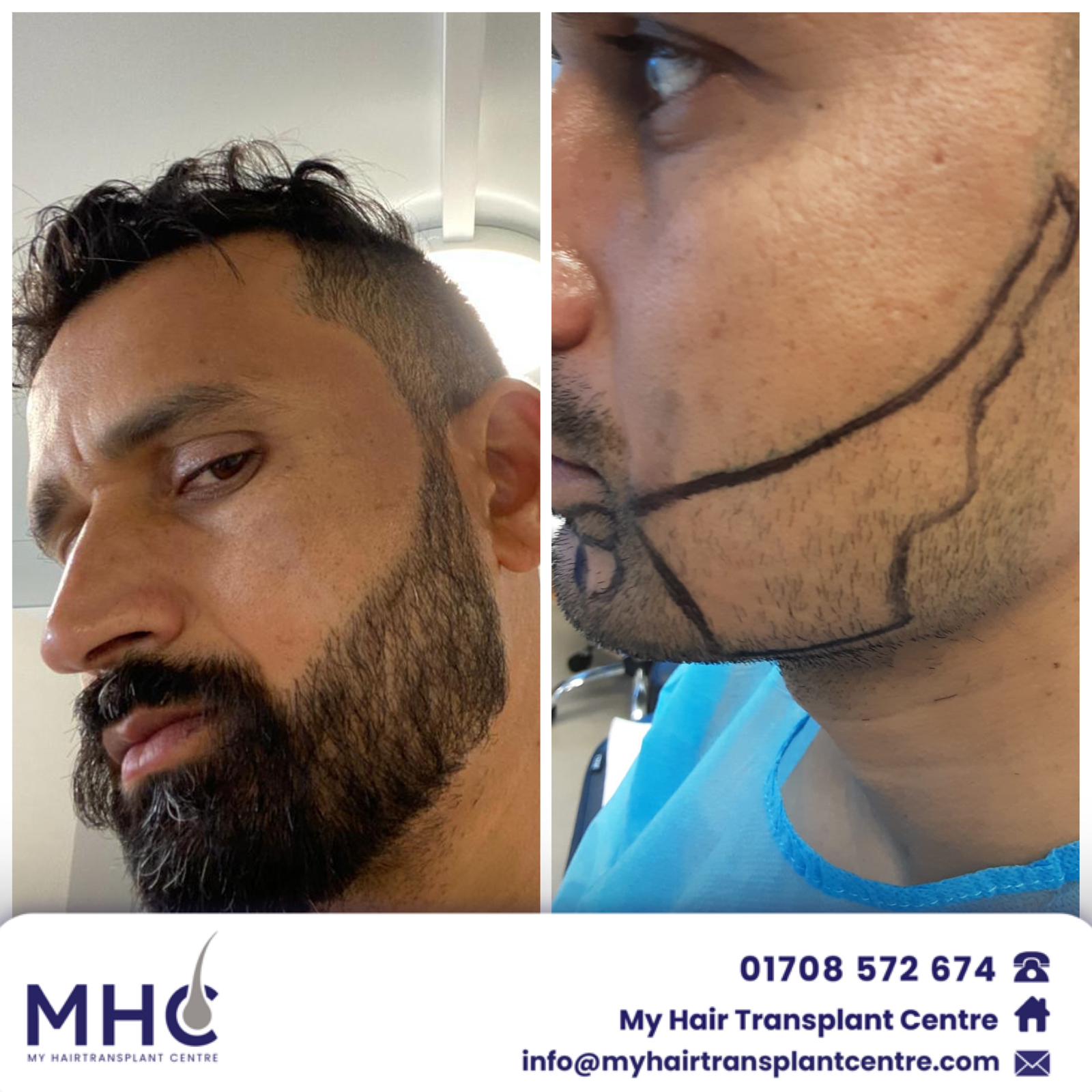
Beard Transplant
Beard transplant is a surgical procedure that uses FUE (Follicular Unit Extraction) technique to restore hair growth in areas of the face where hair is thin or patchy. The procedure involves removing individual hair follicles from a donor area, usually the scalp, and transplanting them to the area of the face where the beard is thin or patchy.
The FUE technique used in beard transplant is similar to the one used in head hair transplant. The surgeon uses a small circular punch tool to remove individual hair follicles from the donor area. These follicles are then carefully transplanted to the area of the face where the beard is thin or patchy. The transplanted hair follicles will then begin to grow in their new location, resulting in the restoration of hair growth.
One of the main advantages of beard transplant is that it allows men to have a fuller and thicker beard, which can enhance their appearance and boost their self-confidence. The procedure is considered to be minimally invasive, and recovery time is usually shorter than traditional hair transplant methods. The risk of complications is also lower.
Beard transplant is a very effective procedure for restoring hair growth, but it is important to note that the procedure requires multiple sessions in order to achieve the desired results. It is also important to consult with a qualified and experienced surgeon to ensure that the procedure is performed safely and effectively.
It’s also worth noting that the procedure can be done for any other area of the face such as sideburns, moustache or even chest hair.
Reasons for a Patchy Beard
There are several reasons why a person may have a patchy beard, including:
- Genetics: The most common reason for a patchy beard is genetics. Some men simply do not have the genetic makeup to grow a thick, full beard.
- Hormonal Imbalances: Hormonal imbalances, such as low levels of testosterone, can affect beard growth.
- Stress: High levels of stress can cause hair loss, including in the beard area.
- Nutritional Deficiencies: A diet lacking in certain nutrients, such as biotin and zinc, can affect hair growth.
- Illness or Medication: Certain illnesses and medications can cause hair loss or affect beard growth.
- Alopecia: Alopecia areata is an autoimmune disorder that causes hair loss, including in the beard area.
- Scarring Alopecia: Scarring alopecia is a type of hair loss caused by scarring of the hair follicles, which can result in patchy beard growth.
- Poor Grooming Practices: Neglecting to groom the beard properly, such as not trimming it regularly, can lead to patchy growth.


